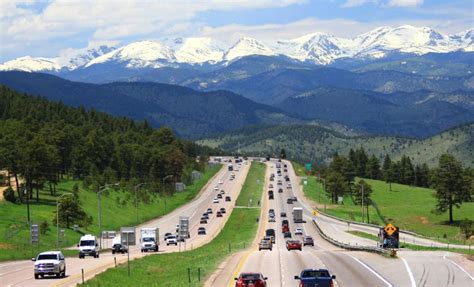Perfecting Your Vail Trip: Denver Distance Tips
Dreaming of a luxurious Vail ski trip? The journey from Denver International Airport (DIA) to the slopes of Vail is a crucial part of the overall experience. Getting it right can set the tone for a smooth, relaxing vacation, while any hiccups can quickly sour your mood. This guide will navigate you through the various options, helping you perfect your Vail trip by making the Denver-to-Vail transfer seamless.
How Far is Vail from Denver Airport?
The drive from Denver International Airport (DIA) to Vail is approximately 110 miles, but this seemingly straightforward distance can take anywhere from 2 to 4 hours depending on traffic, weather conditions, and your chosen mode of transportation. Mountain passes in winter can significantly extend travel times, especially during peak seasons and inclement weather.
What's the Best Way to Get from Denver to Vail?
Several options exist for reaching Vail from Denver:
1. Renting a Car: This offers flexibility and independence, allowing you to explore beyond Vail if desired. However, winter driving in the mountains requires experience and caution. Four-wheel drive or all-wheel drive is highly recommended, and you should be prepared for potential delays due to weather.
2. Shuttle Services: Numerous shuttle companies offer comfortable and convenient transportation directly from DIA to Vail and back. This eliminates the stress of driving, especially in challenging winter conditions. Pre-booking is essential, particularly during peak season. Look for companies offering door-to-door service for the ultimate convenience.
3. Private Car Service: For a luxurious and hassle-free experience, consider a private car service. This option offers personalized attention, comfort, and often quicker travel times than shared shuttles. Prices are naturally higher, but the extra comfort and convenience might be worth it for some travelers.
4. Shared Ride Van: A more budget-friendly option than a private car, shared ride vans offer a compromise between cost and convenience. You'll share the ride with other passengers, making the journey potentially longer.
What About Driving Times in Winter?
H2: How long does it take to drive from Denver to Vail in winter?
Winter driving adds significant complexities. Expect travel times to be considerably longer than in summer, potentially doubling or even tripling. Snowstorms, ice, and reduced visibility are common, requiring extra driving time and caution. Chains might be required, and even with 4WD/AWD, slow and steady driving is paramount. Check road conditions before you depart and allow ample extra time to reach your destination safely.
H2: What are the road conditions like from Denver to Vail in winter?
The road conditions from Denver to Vail in winter can be unpredictable. I-70, the main highway, is regularly treated, but snow and ice can still accumulate quickly. Mountain passes like Eisenhower Tunnel can be particularly challenging. Before you embark on the drive, consult the Colorado Department of Transportation (CDOT) website for real-time road conditions and potential closures. This is crucial for safe and timely travel.
H2: Is it safe to drive from Denver to Vail in winter?
Driving from Denver to Vail in winter is safe if you take the necessary precautions. This includes checking road conditions, having a properly equipped vehicle (4WD/AWD and snow tires are highly recommended), driving slowly and carefully, and allowing plenty of extra time for the journey. If you're uncomfortable driving in winter conditions, opting for a shuttle service or private car service is highly advisable.
Planning for Your Transfer: Essential Tips
- Book in advance: Especially during peak season (holiday periods and weekends), book your transportation well in advance to secure your preferred option and avoid disappointment.
- Pack appropriately: Bring warm clothes, extra layers, snacks, and water, regardless of your chosen mode of transportation. Winter conditions can cause delays.
- Check road conditions: Always check CDOT's website before you embark on your journey for the most up-to-date information on road closures and conditions.
- Allow extra time: Factor in potential delays due to weather or traffic. It's better to arrive early than to be stressed about lateness.
- Consider your budget: Weigh the cost and convenience of each option when making your choice.
By carefully considering these factors and planning ahead, you can transform the Denver-to-Vail transfer from a potential stress point into a smooth and enjoyable part of your luxurious Vail ski trip. Enjoy the breathtaking scenery along the way!

